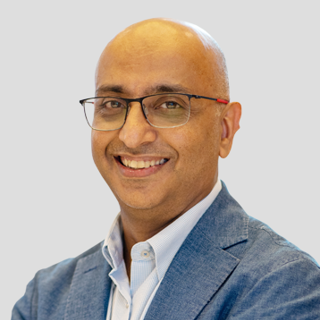In recent years, the Singapore government has made efforts to encourage employers to empower people with disabilities. This was strongly backed by former President Halimah Yacob and her belief that more needs to be done to provide job opportunities to persons with disabilities who have higher qualifications and are able to perform in technical fields.
Several government initiatives also support this view, such as The Enabling Employment Credit. This credit runs until 2025 and provides wage credits to thousands of employers a year, supporting the employment of over 10,000 people with disabilities in 2022.
Still, only 32% of people with disabilities ages 15-64 were employed in 2022 and 2023, according to Singapore government statistics. Despite government initiatives and efforts by organizations like SG Enable and the Cerebral Palsy Alliance Singapore, the representation of people with disabilities remains relatively low.
Employers in Singapore should see this as an opportunity to not only be ethical and supportive of talent of all kinds, but also to find new talent from competitive areas such as the Singapore tech talent pool.
Organizations should create relevant training and employment opportunities for all. Not only is this an opportunity be ethical and supportive of talent of all kinds, but it also allows companies to find new talent in competitive fields such as the Singapore tech talent pool. When inclusive hiring is part of an overall employer brand as well as talent attraction and retention strategies, everybody will shine.
Disputing common myths about people with disabilities in the workplace
While people with disabilities may need certain workplace accommodations, they’re just as capable as anyone of being productive, dynamic members of an organization. A healthier, more positive way to look at disabilities is that some individuals simply have different needs. Some may require support for physical disabilities, while others need employers to provide ways to navigate the workplace if they have non-apparent or invisible disabilities.
Advantages of an inclusive workplace
Employers that care for employees and value their individual skillsets/abilities are more likely to enjoy higher retention rates. Employees that are happier, more engaged, and more comfortable, are more likely to stay and become highly productive members of the organization. Increased diversity and inclusivity can also lead to having a great employer brand narrative. In other words, diversity, equity and inclusion (DEI) isn’t only about ethics, it also promotes significantly better financial performance, as well as more creativity and innovation – according to a McKinsey study.
Sourcing underrepresented talent also positions a company to manage through challenging market dynamics. With talent shortages and increased competition, these are true advantages – especially for the tech talent pool in Singapore.
Enabling and empowering people with disabilities
Employers must address common prejudices against people with disabilities and make sure company policies are customized to each person’s disability.
To build a more diverse workforce, organizations should start by evaluating and sharing their disability workforce policy. They need to show their dedication to hiring individuals with disabilities and establish a formal policy that reflects this commitment. Being transparent about this commitment with both employees and the public will also help track progress in hiring talent with disabilities.
The policies must also be clear about processes in place for employees with a disability to request reasonable accommodations, which can include workspace adjustments, job restructuring, assistive technology and modified work hours, should these measures be necessary. Investing in technology platforms that are compatible with major screen readers, enable zooming, or have options to adjust color contrast are also ways to ensure an inclusive culture.
This should be reflected through all touchpoints during the recruitment process and disability marketing campaigns to find new talent. Organizations should reevaluate their attraction, application and hiring processes, and provide training for recruiters and hiring managers on appropriate audience etiquette for the interview process. Training recruiters in alternative ways candidates can complete the application process is crucial. That makes sure candidates that reach out for adjustments and accommodations will have a smooth and efficient hiring experience.
Ultimately, employees and management alike stand to benefit from supporting inclusivity and diversity. This would involve addressing and disputing common myths and prejudices against people with disabilities and ensuring that company policies can be customized to each person’s disability. Not only does this open more opportunities for employees, but it also enables and empowers them to thrive in the workplace.
About the expert

Vice President – Business Development, APAC, Cielo
Kumar has over 20 years of regional experience in talent acquisition, ranging from executive search to recruitment process outsourcing.
LinkedIn connect





